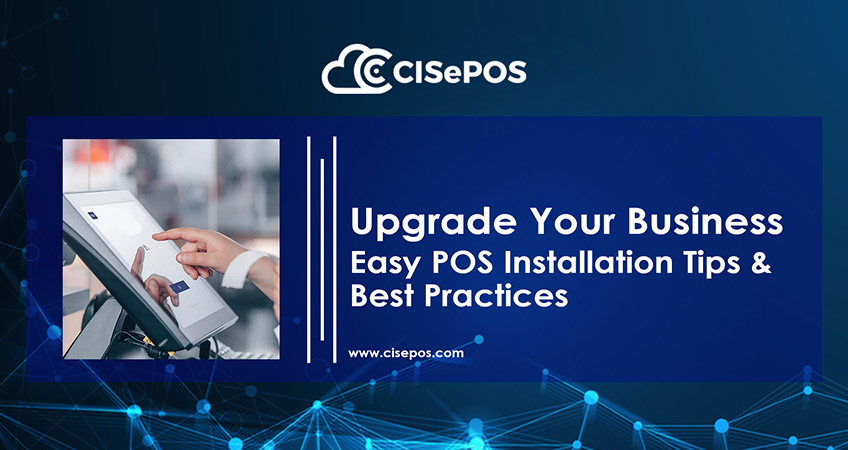
POS systems help you manage inventory, understand your customers better, and make smarter business decisions. However, setting up a POS system can be quite challenging. Hence, it is vital to have a POS system for the success of your business. Let’s discover some practical tips for smooth POS installation.
Understanding POS Systems
A POS system is a device that uses hardware and software to record and process sales transactions. This system can be tailored to meet your business needs. It provides an easy way for customers to pay for products and services. And offers features like inventory tracing, sales reporting, and customer data management.
Why Invest in a POS System?
Investing in a POS system offers several benefits:
- It makes sales processes more efficient. It also reduces manual errors, thus, speeding up transactions.
- Moreover, real-time tracking of inventory levels help prevent stockouts and overstock situations.
- Additionally, with the help of customer data it analyzes marketing efforts and improves customer service.
How To Use Point Of Sale System
Step 1: Hardware Setup
Firstly, you need to set up your POS hardware. This process includes installing a touchscreen monitor, barcode scanner, cash drawer, receipt printer, and other devices as per your business need.
Step 2: Software Installation and Setup
Choose a customizable point of sale software that aligns with your business needs. Each retail sector will have POS software that is specifically designed for its needs. The software provider will install the point of sale software on your device. You can customize the setting such as tax rates, currency, receipt formatting, and user access level.
Step 3: Adding Products and Inventory Management
Input details of the products in the system such as the name, price description and any applicable barcodes.Organize your products into different categories. This will help to keep the checkout process simple and easy to track. Additionally, assign the initial stock level to each item so when the products are sold your inventory will be automatically updated.
Step 4: Sales Process
Start a sale process by selecting items from the product list. Let the system calculate the cost and tax. You can offer various payments methods and apply discount and promotions if applicable
Step 5: Customer Management
Some of the POS systems collect customer names, email addresses and their numbers. This helps in tracking customer purchasing habits. You can utilize this data to implement loyalty programs with the help of accumulated points.
Step 6: Reporting and Analytics
POS allows you to generate sales reports. These can help provide insights into top-selling products, peak sale hours, and overall revenue. These reports provide insights into top-selling products, peak sales hours, and overall revenue. Additionally, you can monitor inventory level to prevent stocks or overstocks to track inventory. Some POS have built in accounting software to track expense profits and tax liabilities.
Step 7: Employee Training
Assign different access levels to employees based on their roles. This ensures that only authorized personnel can perform certain actions, enhancing security. And arrange training sessions to teach your staff how to operate a pos system.
Step 8: Maintenance and Support
Keep your POS software updated. Familiarize yourself with the customer support options. In case of technical difficulties or questions, you’ll know where to turn for assistance.
Best Practices for POS Installation
To further enhance the POS installation process, consider the following practices:
- Keep Software Updated
Regularly update your POS software to benefit from new features and security patches. This will ensure the system remains efficient and secure against potential threats. - Maintain Hardware
Perform regular maintenance on all hardware components to prevent breakdowns. This includes cleaning barcode scanners, ensuring receipt printers have sufficient paper, and checking cables for wear and tear. - Backup Data
Regularly back up your POS data to protect against data loss due to hardware failure or security breaches. Utilize cloud storage solutions for secure and convenient backups. - Monitor System Performance
Continuously monitor the system’s performance to identify and address any issues promptly. Utilize performance analytics provided by the POS system to make informed decisions. - Seek Expert Assistance
Don’t hesitate to seek professional assistance if you encounter challenges during the installation process. Professional POS service providers can offer valuable insights and support.
POS requirements
- Compliance and Security
- Customer and Loyalty Management
- Employee Management
- Inventory Management
- Items and Service Management
- Payment Transactions and Cash Management
- Reporting and Insights
- Sales and Marketing Management
- Store Management


